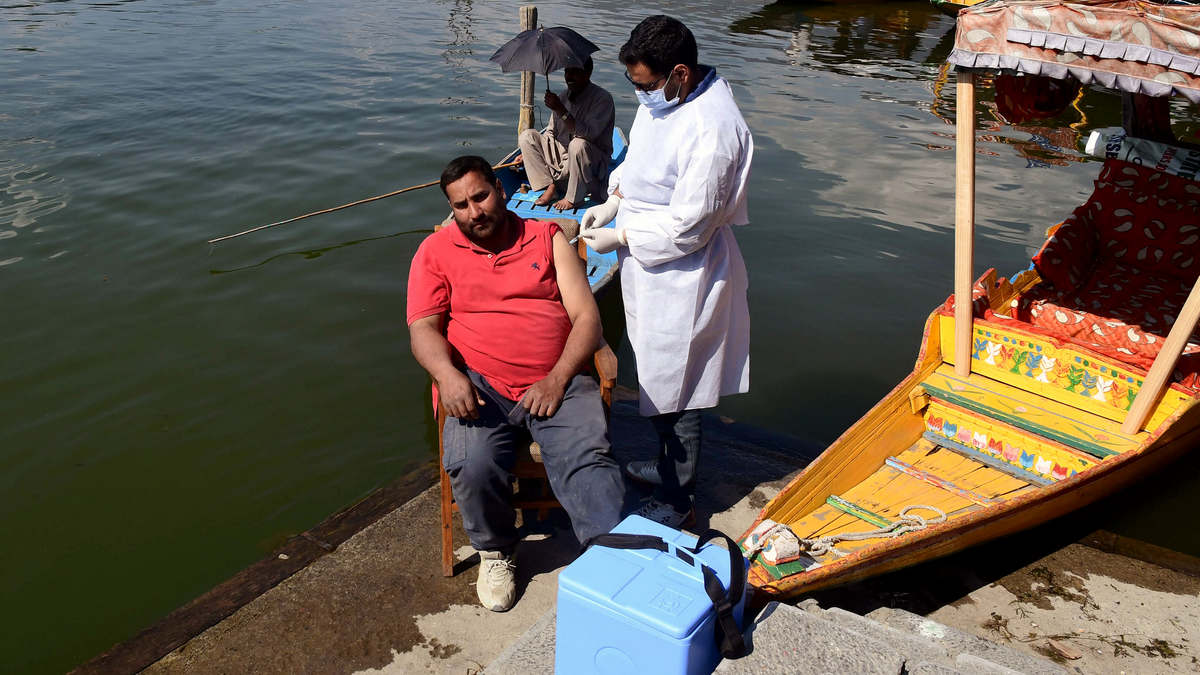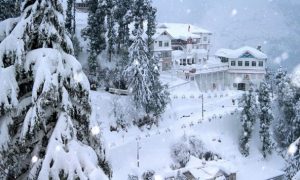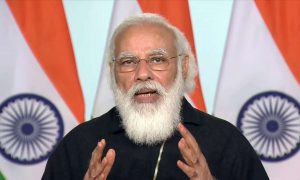J&K has inoculated more than 67% of its 45-plus population, far more than the national average of around 44%. It also has three districts with 100% coverage in that age group.
New Delhi: Jammu and Kashmir is emerging as one of the country’s leading regions in terms of Covid-19 vaccination, with over 67 per cent of its population above the age of 45 already inoculated, and three districts achieving 100 per cent coverage in this age group.
Data from the government of J&K reveals that as of 26 May, the union territory has fully vaccinated over 67 per cent of its population above the age of 45, compared to the national average of 44.1 per cent (according to Union health ministry data).
Officials in the J&K administration ThePrint spoke to said while there was vaccine hesitancy initially, micro-planning and engagement with authorities at district and panchayat levels, as well as with religious leaders, helped ramp up the vaccination drive.
Promising numbers
Jammu and Kashmir has a total population of 1.4 crore, and so far, has administered 31,45,639 doses of the Covid-19 vaccines. The number on 1 May was 23,71,985 — which means over eight lakh doses have been given in 26 days.
The only three districts in the country to have achieved 100 per cent inoculation in the 45-plus age group are Jammu, Shopian and Ganderbal all in this union territory. Another district, Samba (97.88 per cent) is also nearing completion of the vaccination drive in this age group.
However, all is not rosy — there are districts like Kupwara and Srinagar that lag behind, with 32.90 per cent and 41.95 of 45-plus persons inoculated so far. They are the only districts in J&K who are below the 50 per cent mark.
Overall, the Jammu division has inoculated 98.29 per cent of 45-pluses, while the Kashmir division has inoculated 69.42 per cent.
Vaccination for the 18-44 age group, which was opened up countrywide on 1 May, is only underway in eight districts as of now, according to government officials.
Addressing vaccine hesitancy
Officials said that while vaccine hesitancy was a concern among the people in the beginning, it has been overcome now.
“We had experience with vaccine hesitancy — we had seen similar hesitancy during the measles vaccination drive as well. So this time, we were prepared and depended on a high-intensity awareness programme, which involved shaking people into sensitisation through experiences of those who have lost relatives due to Covid,” Yasin M. Choudhary, Mission Director of the National Health Mission in J&K, told ThePrint.
In the Kashmir region, religious leaders were brought in to help increase awareness, especially during the Islamic holy month of Ramzan.
“We roped in religious leaders early on to address hesitancy, and their message was taken very seriously by the public, especially because we were seeing the peak in cases during Ramzan. There is a belief that vaccines can’t be taken during fasting, but we managed to tide over that due to messaging from religious leaders,” added Yasin Choudhary.
Authorities in Shopian also credited religious leaders for playing a key role in spreading awareness, which led to the district’s 100 per cent vaccination record in the 45-plus age group.
“We got masjid committees, which are called Auqaf, to make announcements during daily prayers, as well as during Friday namaaz. This helped a lot in creating awareness and addressing hesitancy due to religious reasons,” said Shopian’s District Magistrate Sachin Kumar Vaishya.
However, in Jammu, the other district with the perfect record, authorities said there had been no need to rope in religious leaders.
“Kashmir has different challenges and that is why religious leaders were roped in there. Here, in Jammu, we don’t face those challenges, so our engagement included bringing in community leaders and panchayat leaders, whose words have resonance with the people, to spread awareness,” said Anshul Garg, the Deputy Commissioner/District Magistrate.
The local media was also brought in to ensure that the messaging is driven into the population.
Micro-planning and decentralisation
Officials have also credited ‘micro-planning’ as the key to their success. This involved a decentralised approach involving the district authorities, panchayats and tehsil level officers who worked in tandem with the J&K administration.
“Micro-planning has helped us immensely — by involving the district and panchayat authorities, as well as collaborating with the family welfare and education departments,” said a senior official in the J&K Health Department who did not wish to be named.
In addition, mobile vaccination camps were also set up in remote areas. “We adopted a decentralised approach, which included setting up mobile camps in smaller villages and remote areas, and made sure that medical personnel who were observing adverse effects also travelled with those teams,” said Yasin Choudhary.
Officials said these mobile vaccination camps helped the most in border areas. A senior official in the Kupwara district administration said: “Since there is a threat of militancy as this is a border district, these camps helped in addressing hesitancy, and now we are seeing numbers rise as people are thronging to get vaccinated.”
Panchayat and booth-level election officers helped in conducting door-to-door surveys, to ensure no one is left behind. “Door-to-door surveys worked as both an outreach programme, where we informed them about helpline numbers, and also allowed us to identify those who had not been vaccinated,” said Jammu DC Garg.
Lack of ‘equitable distribution’?
Asked about the Kashmir division lagging behind Jammu in terms of the overall percentage of 45-pluses vaccinated, Yasin Choudhary said: “Kashmir has lagged behind Jammu because of its higher population, and the hesitancy that we saw initially. But if you go by the absolute numbers and look at both the divisions, there is not much difference.”
Government data also shows that in the Kashmir division, vaccinations were halted between 13 May and 16 May, whereas there were no such interruptions in Jammu.
A senior health department official who wished to remain anonymous said: “We saw a shortage in the middle of May in Kashmir, but that has been sorted now and we have enough doses from the Centre.”
In Srinagar, the second-worst-performing district, officials blame ‘inequitable distribution’ for the low vaccination number.
“We get the third highest doses in J&K after Jammu and Baramulla, despite our large population. Yet, we have managed to vaccinate around 41 per cent of the 45-plus age group,” said a senior official who did not wish to be named.
Vaccines for 18-44 age group
J&K has started vaccinations for 18-44-year-olds only in eight districts — Jammu, Srinagar, Anantnag, Baramulla, Budgam, Kathua, Udhampur and Rajouri — but officials say more will be added soon, and priority will be given to high case load districts.
“Following the J&K administration’s plan, we have already started targeted vaccination in the 18-plus group and are inoculating those who are high risk, those with comorbidities and those are working in the public like vendors, tourist guides, shikarawallas. Government employees on Covid duty will be brought in next, and this is how we will move forward,” said the Srinagar district administration official quoted above.
(Edited by Shreyas Sharma)





































